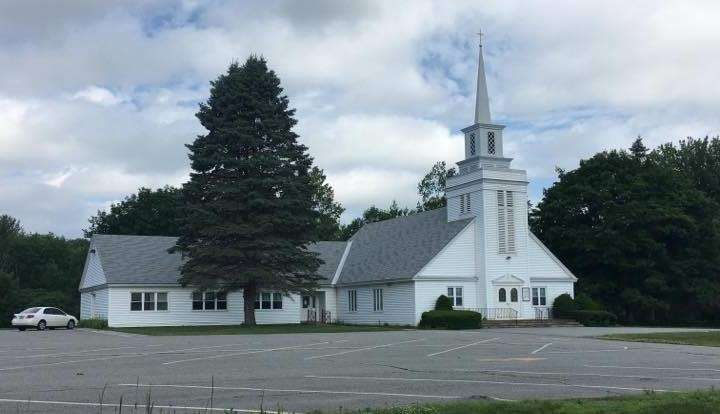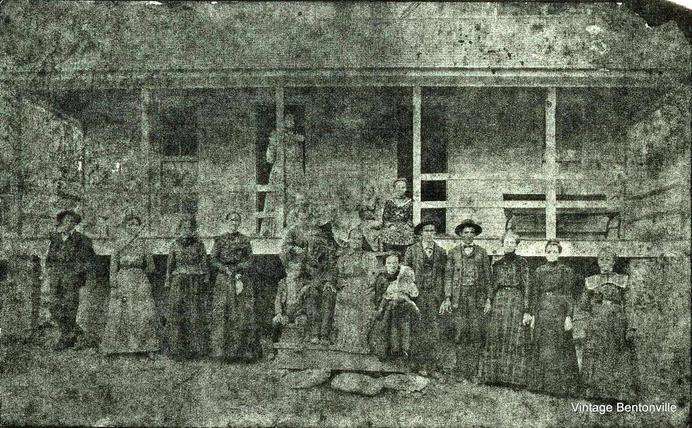TEAM PHOTO: Messalonskee 5/6 youth blue team
/0 Comments/in Fairfield, Messalonskee, Photo, School News, Sports/by Website Editor
Front row, from left to right, Walker Bucknam, Teagan Cox, Austin Pearl, Blake Masse, Kael Segars, Jake Cyr, and Dax Allen. Middle row, Bennett Pottle, Aiden Desrosiers, Jamaica Jackson, Dom Veilleux, Everett Wadleigh, and Easton Gradie. Back row, assistant coach Pete Bucknam, head coach Dan Cyr, assistant coach Josh Desrosiers, and assistant coach Kris Segars. (photo by Missy Brown, Central Maine Photography)
SNHU announces summer 2023 President’s List
/0 Comments/in Albion, Anson, Augusta, Fairfield, Jefferson, School News, Waterville/by Website Editor Southern New Hampshire University (SNHU), in Manchester, New Hampshire, announces the following students to the Summer 2023 President’s List.
Southern New Hampshire University (SNHU), in Manchester, New Hampshire, announces the following students to the Summer 2023 President’s List.
Talon Mosher, of Winslow, Alisha Barrette, of Skowhegan, Candice Eaton, of Waterville, Alyson Cass, of Waterville, Matthew Bandyk, of Jefferson, David Gerry, of Fairfield, Stormy Wentworth, of Fairfield, and Jacob Colson, of Albion.
Those named to the dean’s list include: Carrielee Harvey, of Waterville, Robert Farrington, of Augusta, and Ashley Parks, of Anson.
The summer terms run from May to August.
EVENTS: Messaloskee girls to host girls youth soccer mentoring day
/0 Comments/in Albion, Community, Fairfield, Messalonskee, School News/by Website EditorMessalonskee High School girls soccer and the ShineOnCass Foundation will host its 8th annual girls youth soccer mentoring day “ShineOn Saturday” September 23, from noon to 2 p.m., on the Messalonskee High School Turf Field, in Oakland. The event is held to honor former Messalonskee soccer player and youth mentor Cassidy Charette, who died in a hayride accident October 11, 2014.
Area girls, ages pre-kindergarten to fifth grade, are invited to attend at no cost. Soccer skills are not required. In addition to participating in skill building and fun field games, attendees will receive an autographed team poster and a ShineOnCass wristband that earns them a special snack and recognition at the Lady Eagles’ homecoming soccer game. Healthy snacks will be provided.
To assist in planning, please pre-register at shineoncass.org, or send your child’s name and age, parent/guardian name and contact info to shineoncass@gmail.com. Walk-ins welcome.
The ShineOnCass Foundation was created to educate, inspire and empower youth to shine their own light through kindness and volunteer charitable activities. For more information about the ShineOn Saturday event or the Foundation, visit shineoncass.org or email shineoncass@gmail.com.
Emery Pell (front) and her twin sister Shea, learn new soccer skills under the guidance of their mentor and Messalonskee girls soccer player Brooke Landry, at last year’s ShineOn Saturday. The 8th annual event connects young girls with high school soccer players, for a fun day of skills, games and positive youth mentoring. ShineOn Saturday is organized by the Lady Eagles and the ShineOn Cass Foundation to honor and remember former Eagle midfielder and youth mentor Cassidy Charette. The event is free to all interested girls, Pre-K to Grade 5. Contributed photo
KVCOG schedules household hazardous waste pickup dates
/0 Comments/in Belgrade, Bingham, Canaan, Central ME, Community, Fairfield, Madison, Oakland, Skowhegan, Waterville/by Website Editor The Kennebec Valley Council of Governments, based in Fairfield, plans to host Household Hazardous Waste Collection Days in October in Kennebec and Somerset counties.
The Kennebec Valley Council of Governments, based in Fairfield, plans to host Household Hazardous Waste Collection Days in October in Kennebec and Somerset counties.
Skowhegan, Anson, Bingham, Canaan and Madison will collect from 9 a.m. to noon, Saturday, Oct. 7, at the Skowhegan Transfer Station, 29 Transfer Station Drive. This is open to residents of those towns, who must call their own town office to schedule a time slot (Skowhegan, 207-474-6902; Anson, 207-696-3979; Bingham, 207-672-5519; Canaan, 207-474-8682; Madison, 207-696-3971).
Winslow, Belgrade, Clinton, Fairfield, Oakland and Waterville will collect from 8 a.m. to noon, Saturday, Oct. 21, at Winslow Public Works, 135 Halifax St. Residents must call their municipal office to schedule a slot (Winslow, 207-872-2776; Belgrade, 207-495-2258; Clinton, 207-426-8322; Fairfield, 207- 453-7911; Oakland, 207-465-7357; Waterville, 207-680-4200).
Those who don’t have an appointment slot made with their town will not be able to drop off that day.
Many chemicals commonly used around the home are hazardous, either alone or when combined with other chemicals, and need to be disposed of by professionals trained to handle hazardous materials, according to a KVCOG news release.
Improper disposal of these materials can disrupt the function of sewage treatment plants or private septic systems, contaminate ground water, and harm animals and residents. Items that are difficult to recycle or dispose of — such as electronic waste, batteries, paint, anti-freeze, chemical cleaners, yard chemicals, old fuels, oils and mercury thermostats — many of which can also become harmful if left unmonitored.
The council will have local law enforcement officials on hand in Winslow and Skowhegan to collect and properly dispose of any pharmaceuticals that residents want to bring in.
New pastor welcomed at Fairfield United Methodist Church
/0 Comments/in Community, Fairfield/by Website EditorFairfield United Methodist Church welcomes Brenda E. Haskell, as pastor. Though she has always felt a calling for the ministry, she was told at an early age that women are not ministers. After graduating from Winthrop High School, she attended the University of Southern Maine for art education.
Then, several years later attended the University of the State of New York as an undergraduate of liberal arts. Later in life she took a disciple course and was told by her peers that ministry was her calling. She immediately signed up for seminary school and graduated from Bangor Theological Seminary in 2003.
Brenda first pastored in Hartland at Grace Linn UMC (1999-2004) as a licensed local pastor and then at Vassalboro UMC (2006-2008). In addition to attending seminary, and serving as licensed local pastor, she also worked as an investigator at the Maine Human Rights Commission. In 2007, she changed jobs and went to work for the University of Maine system, as an investigator and then as director of equal opportunity, retiring in 2017.
Though she left the ministry to work full time for the University of Maine, her call to ministry never faded and continued to serve at Vassalboro UMC in various capacities, was a member of the preaching team for the Fairfield Center UMC and filled in for other pastors for vacation or health reasons.
The congregation is happy she is once again serving, now as pastor of the Fairfield Center church. Her greatest joy in the ministry is to bring God’s word of hope and caring to those struggling; those seeking to live the good life God intended for them. Wherever she serves, her motto remains, “Everyone is welcome here.”
The congregation meets for Sunday service at 10:30 a.m.
PHOTO: Central Maine Senior Football Camp (2023)
/0 Comments/in Community, Fairfield, School News, Sports/by Website EditorKen Smith inducted into Cal Ripken Coaches Hall of Fame
/0 Comments/in Community, Fairfield, Sports/by Website Editor
Ken Smith, right, of Fairfield, accepting his induction into the Cal Ripken Coaches Hall of Fame (contributed photo)
On July 6, 2023 Ken Smith, of Fairfield, was inducted into the Cal Ripken Coaches Hall of Fame. The presentation took place in Fairfield prior to an 11U state tournament game. Cal Ripken League representatives, family, community members along with past and present coaches and players from Ken’s teams were present for the ceremony.
Ken grew up in Fairfield, and started playing Farm League baseball in 1965 at age 6. In those days teams wore ear flaps instead of helmets and used wooden bats. His father, Ken Sr., pitched and hit baseballs to Ken and his friends growing up and helped develop his skills and love of baseball. He went on to play Little League, Babe Ruth, high school and on American Legion teams, all in Fairfield. He continued to stay involved with baseball by umpiring little league and playing on adult softball teams. He also enjoys watching baseball and visiting both minor and major league parks.
In 1996 he started coaching at the Little League level and is still coaching today. He has been playing, coaching, umpiring and involved with baseball for 58 consecutive years. While coaching baseball Ken has helped transfer his knowledge and love of baseball to many young players and his four sons. He recognizes his players’ first hits by presenting them with a special dated baseball to commemorate the milestone. He also ends each season with a parents vs. kids game and presents players with individual and team stats that he carefully keeps track of each season, with the help of some very good scorekeepers.
In his early days of coaching he was one of the only coaches in the local league to have his players hitting off a tee and using tennis balls during practices. He also had his teams bunt during games which he still believes in, and does today.
He has coached over 350 games and umpired over 150 games in his career to date. His teams have won nine league championships and four district tournaments. One special team won the state championship in 2010. This team went on to represent Maine in the New England tournament, finishing in fourth place twice.
Ken has an extensive knowledge of baseball and a true dedication to the sport.
PHOTO: Central Mainers attend football camp
/0 Comments/in Fairfield, Photo, School News, Sports/by Website EditorUp and down the Kennebec Valley: How towns cared for their poor (conclusion)
/0 Comments/in Benton, Central ME, Clinton, Fairfield, Kennebec County, Local History, Up and Down the Kennebec Valley, Waterville, Winslow/by Mary Growby Mary Grow
Benton, Clinton, Fairfield, Waterville, Winslow
This fourth and final article on the ways central Kennebec Valley towns carried out their responsibility to care for their poorest residents will provide bits of information about half a dozen towns not already discussed.
* * * * * *
For Benton (which was part of Clinton until March 16, 1842, when it became a new town named Sebasticook, changed to Benton on March 4, 1850), Henry Kingsbury had only one sentence about paupers: “The poor of the town have never been numerous, and are cared for [in 1892] by individual contract.”
In his Kennebec County history, he related an informal example. In the early 1800s, he wrote, a family named Piper proposed moving from Anson, Maine, to Ohio. As they were canoeing down the Kennebec, the canoe upset at Ticonic Falls, in Waterville, and the father drowned.
A second-generation Benton resident named Isaac Spencer rescued the Piper son, Joseph, “snugly wrapped in a blanket,” and brought him to his house. Joseph’s mother also survived, but she could not support her son, so he stayed with Spencer.
Kingsbury wrote that Joseph Piper “became a successful farmer.” He died in the 1850s, leaving a large estate on part of which a grandson named Charles was living in 1892.
* * * * * *
Kingsbury wrote that Clinton’s first poor farm, which existed before Benton and Clinton were separated in 1842, was “about half a mile west of Morrison’s Corner.”
Morrison’s Corner was, and as Morrison Corner still is, the four corners where Hinckley Road, running roughly north to south, meets Battle Ridge Road, which runs northeast to connect to Upper Bellsqueeze Road, and Ferry Road, which runs southwest to the former Noble’s Ferry on the Kennebec River.
By 1879, according to that year’s Kennebec County atlas, Clinton had a new town farm east of the original one, on the east side of Hill Road (which runs north-northwest out of downtown Clinton toward Canaan).
* * * * * *
Crossing back to the west side of the Kennebec, the 1988 Fairfield bicentennial history has no reference to a town farm, poor house or almshouse or any other town-funded method of caring for paupers. The first town meeting after the town was incorporated was on Aug. 19, 1788; the first reference to appropriations says that in 1793 “The Town first raised money for schools,” but lists no amount and mentions no other expenditures.
The history gives a short paragraph to what became the Goodwill-Hinckley School (described in the May 20 and June 3, 2021, issues of The Town Line). Rev. George W. Hinckley founded what started as Good Will Farm in June 1889, in the part of Fairfield now called Hinckley, “as a home for boys.”
In November 1889, the history continues, “the Good Will Home Association was organized as a home for needy boys with funds Rev. Hinckley had been collecting for some time.” The writers go on to describe 20th-century changes.
At the end of the bicentennial history is a reproduction of a 1909 map of Fairfield that shows a building labeled “Town Farm.” It is on the south side of a road running east from Green Road to Nye’s Corner, which is south – downriver, toward the Fairfield business district – of the Goodwill School.
A map from the mid-1980s shows the former road as a trail. It does not appear in any form on a contemporary on-line map.
(According to the 1909 map, the town farm was a short distance east of a four-way intersection where at least two families named Green lived. There was a schoolhouse on the east side of the intersection.)
* * * * * *
Waterville was part of Winslow from 1771 to 1802, and Oakland was part of Waterville until 1873, when it became a separate town called West Waterville (changed to Oakland in 1883).
Kingsbury explained that the growth of water-powered manufacturing on Messalonskee Stream, the outlet of Messalonskee Lake, led to the development of an industrial center separate from Waterville’s, which was based on and near the Kennebec.
Kingsbury’s accounts of poor farms in Winslow, Waterville and Oakland are frustratingly incomplete. As he often did, he assumed future readers would have access to the same documents he had, and would recognize the names of families, roads and localities that were part of his daily experience in the 1890s.
In his chapter on Winslow, he wrote that until 1859, paupers were bid off. That year, “the town voted $3,200, and bought the Blanchard farm.”
If the former Blanchard farm was still the town farm when the 1879 Kennebec County atlas was created, it was in a part of town more settled than officials usually chose for an almshouse.
The map shows the Town Farm on the west side of what is now Clinton Avenue (Route 100) running northeast along the Sebasticook River to Benton. The farm is marked about halfway between the top of the hill in Winslow and the Hayward Road intersection. Along this stretch, the map shows a dozen houses (occupied by, among others, several Getchell and Fuller families and two whose last name was Town) and a schoolhouse diagonally north of the town farm.
Kingsbury was slightly more informative on Waterville (unlike the Waterville centennial history; the summary of the 100 years from 1802 to 1902 doesn’t mention the poor, and since the book has a names-only index, finding any other reference is time-consuming).
In Waterville, Kingsbury found, the poor were bid off from 1811 (or earlier) until about 1842. In 1811, five paupers cost the town from 35 to 65 cents a week, for a weekly total of $2.59. In 1812, the town supported a dozen people and the cost went up to $3.48 a week.
(Ruby Crosby Wiggin’s comments about doctors’ fees, cited in last week’s article, suggest there might have been occasional additional charges.)
From 1837 records Kingsbury quoted a decision that the poor as a group “be sold at auction for one year.” Samuel H. Batchelder was the successful bidder, charging $865.
Around 1842, Waterville officials bought from Joseph Mitchell and George Bessey a 90-acre farm to use as a town farm. At an unspecified later date, the town also acquired a woodlot in Sidney, apparently intended to complement the farm.
The 1879 Kennebec County map shows Waterville’s town farm a short distance south of downtown, on the south side of Webb Road. It was just west of the intersection with Mitchell Road, which current maps show coming south from the back of LaFleur Airport to Webb Road.
In March 1890 the house on the town farm burned down. Officials then bought seven acres from George Boutelle and “built the present excellent city alms house at a total expense at $6,444.”
(George Keely Boutelle was a prominent Waterville lawyer and businessman who helped organize and lead several banks and was active in civic organizations.)
By 1892, Waterville’s “poor department” was costing more than $9,000 a year, Kingsbury added.
The 1873 separation of West Waterville (which became Oakland) from Waterville would have required the new town to assume the care of its indigent residents. The 1879 map of the new town shows a town farm not far west of downtown, on the north side of what is now High Street (Route 137 heading west toward Smithfield). Comparison with a contemporary on-line map puts the farm site about half-way between the Oak Street intersection and the Gage Road intersection.
Kingsbury provided evidence that in the early 1890s Oakland was both running a town farm and caring for paupers off the farm. Appropriations listed in a town report for the fiscal year that ended Feb. 28, 1892, included “support of poor,” $1,100 and “town farm,” $500.
A current on-line map labels the road along the east shore of McGrath Pond that connects Route 137 with Route 11 (the Oakland-Belgrade road) as Town Farm Road. A town farm on this road, if there were one, would have been west of the one in use in 1879.
Story of the Bray sisters
Did local methods of caring for the poor lead to those who were bid off to local families being turned into unpaid and mistreated farm and household help? Linwood Lowden said “without doubt” the system led to abuses; an on-line source says there is no evidence of abuse.
Your writer found one piece of writing that looks at bidding out from the paupers’ viewpoint: a short story by Sarah Orne Jewett called The Town Poor.
Two prosperous women in a small Maine town detour on their way home from a church event to visit two elderly sisters, Ann and Mandana Bray, who ran out of money and saw their house and possessions sold at auction and themselves bid out.
They live in a dingy upstairs room in a shabby farmhouse on a run-down farm. The couple with whom they live, named Janes, are not their social equals, and the complaining wife is not enthusiastic about sharing her house with two more adults. The sisters admit to their friends that they haven’t been to meeting because they lack outdoor shoes that their caretakers never remember to buy for them, nor do they have enough stovewood to keep their room warm.
But they bring out the four china teacups saved from the auction, the last of the homemade peach jam from the peaches that grew by their former house, tea and cheese and crackers. The friends have a warm reunion; and Ann says next time, she’ll invite Mrs. Janes, too; the woman means well and deserves cheering up, because she has a hard life and none of the happy memories the Bray sisters have.
See part 1 here.
See part 2 here.
See part 3 here.
Main sources
Fairfield Historical Society, Fairfield, Maine 1788-1988 (1988).
Halfpenny, H. E., Atlas of Kennebec County Maine 1879 (1879).
Jewett, Sarah Orne, A White Heron and Other Stories (1999 edition).
Kingsbury, Henry D., ed., Illustrated History of Kennebec County Maine 1625-1892 (1892).
Websites, miscellaneous.
Interesting links
Here are some interesting links for you! Enjoy your stay :)Site Map
- Issue for March 13, 2025
- Issue for March 6, 2025
- Issue for February 27, 2025
- Issue for February 20, 2025
- Issue for February 13, 2025
- Issue for February 6, 2025
- Issue for January 30, 2025
- Issue for January 23, 2025
- Issue for January 16, 2025
- Issue for January 9, 2025
- Issue for January 2, 2025
- Issue for December 19, 2024
- Issue for December 12, 2024
- Issue for December 5, 2024
- Issue for November 28, 2024
- Issue for November 21, 2024
- Issue for November 14, 2024
- Issue for November 7, 2024
- Issue for October 31, 2024
- Issue for October 24, 2024
- Issue for October 17, 2024
- Issue for October 10, 2024
- Issue for October 3, 2024
- Issue for September 26, 2024
- Issue for September 19, 2024
- Issue for September 12, 2024
- Issue for September 5, 2024
- Sections
- Our Town’s Services
- Classifieds
- About Us
- Original Columnists
- Community Commentary
- The Best View
- Eric’s Tech Talk
- The Frugal Mainer
- Garden Works
- Give Us Your Best Shot!
- Growing Your Business
- INside the OUTside
- I’m Just Curious
- Maine Memories
- Mary Grow’s community reporting
- Messing About in the Maine Woods
- The Money Minute
- Pages in Time
- Review Potpourri
- Scores & Outdoors
- Small Space Gardening
- Student Writers’ Program
- Solon & Beyond
- Tim’s Tunes
- Veterans Corner
- Donate







